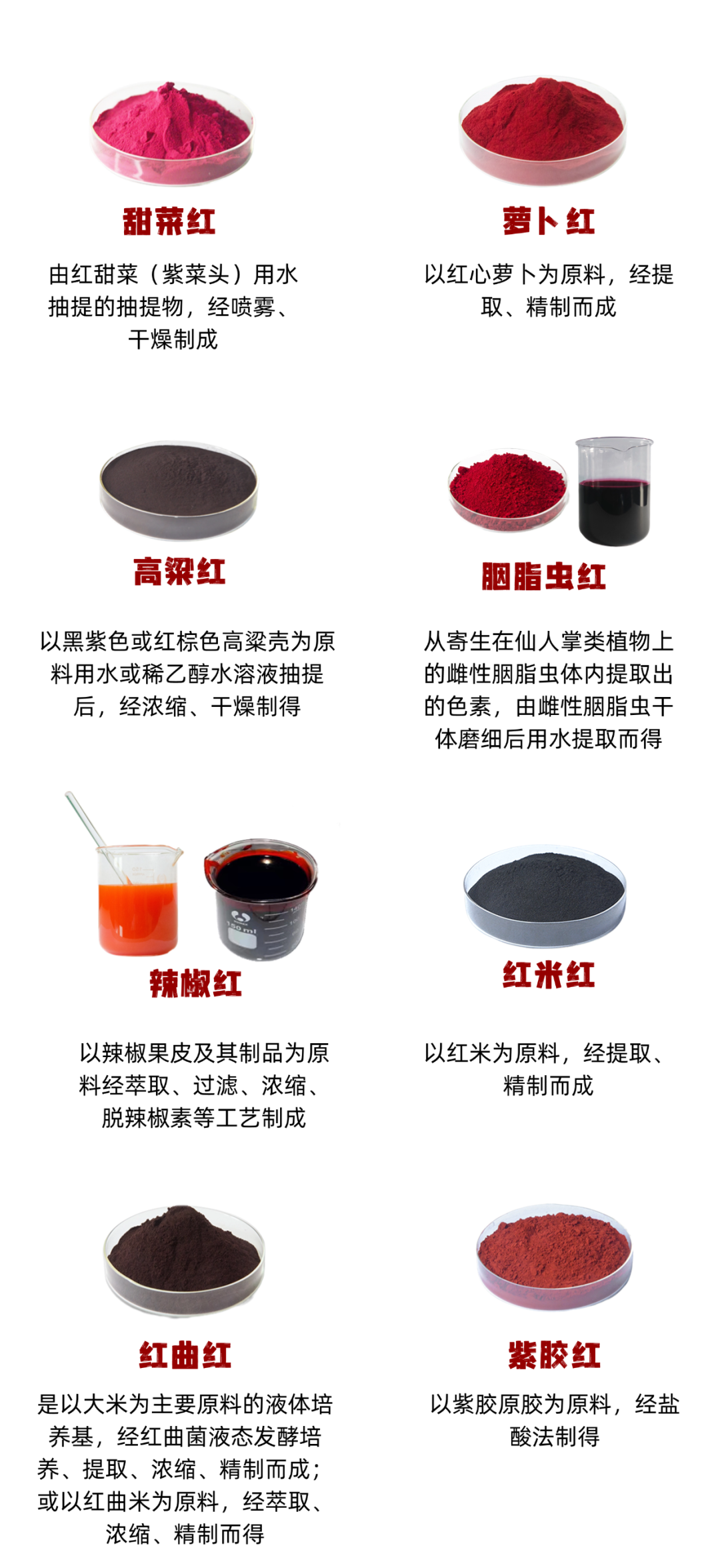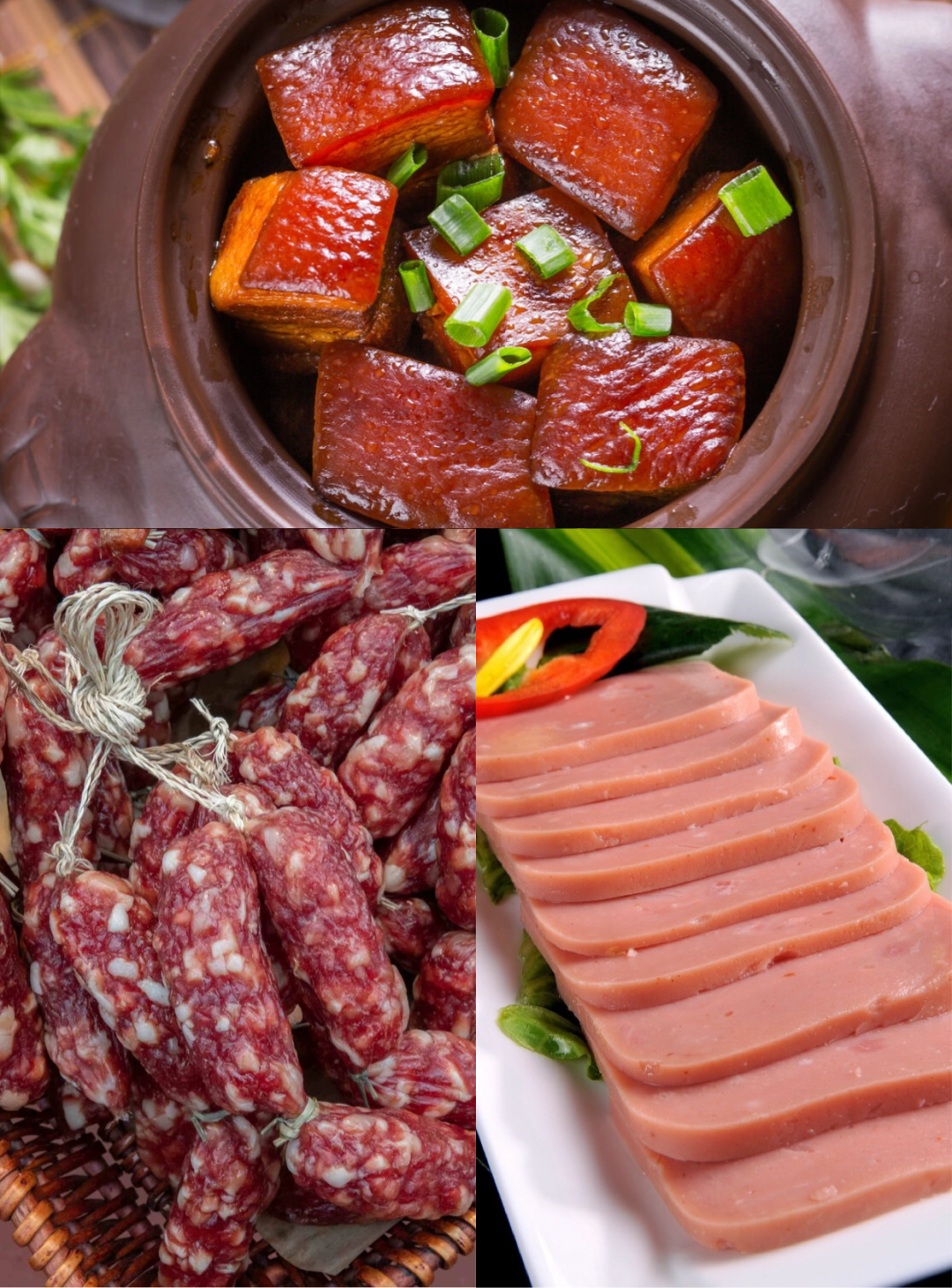

From crimson apples to savory braised meats, red is an essential element during the New Year, embodying people's aspirations for a better future. In traditional Chinese culture, red signifies enthusiasm, vitality, and prosperity, making it an indispensable color in festival celebrations. During the New Year, individuals hope to convey happiness and good luck to their family and friends through red-colored foods, collectively ushering in a hopeful new year. Consequently, whether in festival decorations or on dining tables, red always plays a pivotal role.



These commonly seen red natural pigments are crucial for imparting a natural red hue to food during processing and production. Derived from natural sources such as plants and animals, these pigments not only enhance the visual appeal of food but also stimulate appetite while maintaining natural color and healthiness.
In the beverage category (food classification number: 14.0), common red natural pigments include carmine cochineal, sorghum red, and beet red. For fruit and vegetable juice (pulp) drinks (food classification number: 14.02.03), additional options like paprika red, radish red, and lac red can be used to achieve a naturally appealing red color that enhances both appearance and consumer appeal.

In the meat and meat products industry (food classification number: 08.0), red natural pigments play an irreplaceable role. For prepared meat products (raw meat with conditioning materials) (food classification number: 08.02.01), red natural pigments such as paprika red, carmine cochineal, sorghum red, and beet red are available. For preserved meat products (such as bacon, ham, duck, Chinese ham, sausages) (food classification number: 08.02.02), red natural pigments like red rice red, paprika red, sorghum red, and beet red can enhance the visual appeal of the products.

In baked goods (food classification number: 07.0), red natural pigments also play a vital role. Commonly used pigments include carmine cochineal , beet red, and sorghum red. For pastries (food classification number: 07.02), additional pigments such as monascus red , paprika red, and radish red can add a touch of natural red, enhancing the aesthetic appeal of baked items.

Red natural pigments also contribute to creating visually pleasing colors in other food production sectors. For example, in candies (food classification number: 05.02), pigments like monascus red, red rice red, paprika red, radish red, carmine cochineal, lac red, sorghum red, and beet red can be used. In condiments (food classification number: 12.0), pigments such as monascus red, paprika red, sorghum red, and beet red can improve product appearance, encouraging consumer preference.

With its unique charm and broad applications, red natural pigments increasingly play a significant role in the food production industry. These pigments not only add vibrant colors to food but also provide healthier and more natural choices for consumers.

For more information about red natural pigments, please call us or mail us:
COMPANY: ZHUHAI JINGHAO BIOLOGICAL-TECH CO.,LTD.
ADDRESS: AREA B, 4-3 FLOOR , NO. 5 BUILDING , CHUANGYE WEST ROAD, SHUANGLIN SECTION, LIANGANG INDUSTRIAL ZONE, JINWAN DISTRICT, ZHUHAI CITY, GUANGDONG PROVINCE, CHINA. P.C. 519000.
WEB.: http://www.biolo-tech.com E-MAIL: info@biolo-tech.com
TEL.: 0756-6255288/0756-6255280 MOB.: 13928090373




Hot search label:
Carbon black、 Gardenia yellow、 Curcuma longa、 Natural carotene、 Tripotassium glycyrrhizinate、 Carmine、 Compound colorant、 Complex customizationZhuhai Jinghao Biological-tech Co., Ltd 粤ICP备20042151号